Tag: Tips
10 Testosterone Facts You Can’t Afford Not Knowing
10 Testosterone Facts You Can’t Afford Not Knowing
Ask a brofessor to choose between $10,000 prize money or an optimal testosterone level throughout his lifting career, and he will most probably select the latter. Testosterone is one of the most talked-about and yet misunderstood hormones in gym circles.
Whether you join a gym to build muscle mass or lose weight, chances are you will have the word “testosterone” thrown at you at least once. There is just no escaping it. Before you get swayed by broscientists into doing things you will later regret, you should equip yourself with the correct knowledge about testosterone.
10 Important Facts
1. It Makes You A Man
Testosterone is responsible for:
Facial hair growth
Building muscle mass
Deepening of the voice
Development of the sexual organs, sperm production, and libido
Improving bone density
Fat Distribution
Red blood cell production
For men, testosterone production happens in the testicles. Although test is a male hormone, women produce small quantities of the hormone in the ovaries for optimal body functioning.
Low T-levels in men can cause mood swings, a decrease in bone density, muscle mass. It can also result in body fat gain, hair loss, depression, low sex drive, fatigue, and irritability.
2. Fix Your Diet
Fixing your diet is one of the most efficient ways to improve your testosterone levels naturally. Broccoli, oysters, strawberries, tuna, and egg yolks are some of the best test-boosting superfoods.
You can also improve your T-levels by limiting your alcohol intake, losing weight, and working out regularly. Cutting out junk food from your diet can also spike your T-levels.
3. Boost Your T-Levels By Staying Single
An Italian study found that men who had recently (within the previous six months) fallen in love had lower levels of testosterone compared with those who had not.
On the other hand, women in the same study group showed higher testosterone levels. The research points us towards two conclusions:
Men face a higher degree of stress in a new relationship.
Women are the real boss.
4. Make It Rain
Research conducted at the University of Utah found that testosterone levels in men rise when their favorite sports team wins. Another study showed earning money had the same test-boosting effect in men.
These studies show the correlation between self-esteem and testosterone. A study found that watching porn also caused a 35% testosterone spike in males. Before you head off to watch a few manly videos for “research purposes,” we recommend reading this article until the end for more T-boosting wisdom.
5. Age Is Not An Excuse
Younger people usually consider themselves immune to low testosterone levels. Men of any age can have low T-levels, especially if they have encountered damage to their testes or pituitary gland in the past. Type-2 diabetes, obesity, sleep apnea are also known to be the causes for low testosterone levels in men.
Some people mistakingly think of testosterone as the fountain of youth. Testosterone therapy will do nothing for the 75-80% of men over 65 who have normal T-levels. However, men with below-normal levels might see a boost in sexual drive and bone density from supplemental testosterone.
6. Fun Fact About Testosterone Replacement Therapy
Arnold Berthold, a German zoo curator, observed the earliest form of testosterone replacement therapy in 1849 on castrated roosters.
The roosters stopped fighting, crowing and their combs did not grow. These chickens were back to their old selves as soon as their testes were reconnected.
We guess the new-age Arnold Berthold would conduct the same experiment inside the UFC octagon.
7. Symptoms of Low Testosterone Levels
But how do you know if you are encountering low testosterone levels? Some of the most common symptoms include:
Erectile dysfunction or problems developing or maintaining an erection
Fewer spontaneous erections
Increased body fat
Rapid hair loss
Decreased libido
Infertility
Reduced muscle mass
Persistent fatigue
Enlarged breasts in men
Sleep disturbance
These symptoms could also be the result of other medical conditions. While encountering one or a few of these signs might not be a symptom of low T-levels, you should consult a doctor to identify the underlying cause.
8. Causes of Low Testosterone Levels
Testicular failure
Damage to the testes (from physical trauma, alcoholism, or viral illnesses)
Hypothalamic disease or tumor
Pituitary disease or tumor
Chronic health conditions such as diabetes, high blood pressure, cholesterol levels
Genetic diseases including Klinefelter, Kalimantan, or Prader-Willi syndromes
Being overweight or obese
Drugs or anabolic steroids
9. Normal Testosterone Levels
Generally, the normal test range in males is about 270-1070 per deciliter (ng/dL) with an average level of 679 ng/dL. About 40% of men over age 45 will have levels that come in below that range.
Testing for T-levels is not as easy as it might sound. Your results will vary depending on the time you get your tests done because your stress levels can fluctuate throughout the day.
Normal testosterone ranges are based on morning samples when the average person is at a higher test level. Afternoon tests may give a false impression of low testosterone levels.
You must consult your doctor and decide a time that best suits your lifestyle. Most doctors recommend getting your testosterone check-ups done between 7-10 a.m.
Testosterone levels are hard to analyze. Even if your testosterone levels are below the average 679 ng/dL, you still might not have to worry. Most doctors say that reading between 200-300 ng/dL is a gray area.
10. Eat The Greens
Vegetables such as spinach, Swiss chard, and kale are rich in magnesium, a mineral that might increase the body’s testosterone levels. A 2011 study found that using magnesium supplements for four weeks prompted an increase in testosterone levels of physically inactive participants.
We are sure one of your vegan friends have already told you this, but here it is again – vegan men tend to have higher testosterone levels than both meat-eaters and vegetarians.
Bonus: Low Testosterone Treatment
If you have low testosterone levels, you should begin by making necessary adjustments to your lifestyle. Most men who lose 7%-10% of their body weight see their T-levels improve.
Fixing your diet, working out, drinking less booze, not smoking, getting a good night’s sleep, reducing stress can help maintain healthy test levels.
If nothing seems to work, you could consider testosterone therapy. You could get extra doses of the hormone in the following ways:
Patches
Gels and creams
Injections
Tablets
Pellets
Do you think vegans have higher test levels than meat-eaters?
Let us know in the comments below. Also, be sure to follow Generation Iron on Facebook, Twitter, and Instagram.
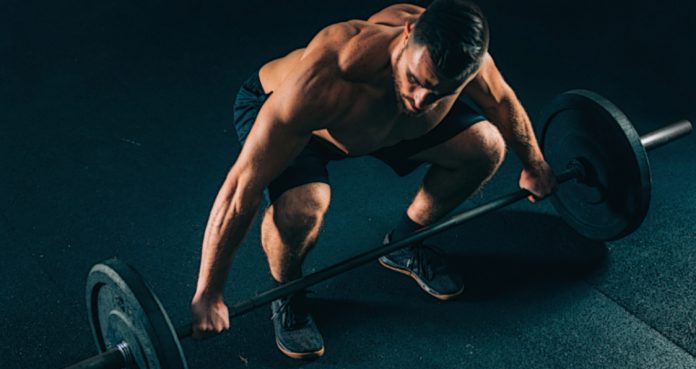
5 Recovery Tips To Help You Build Muscle Faster
Improve Your Recovery With These Tips
Contrary to what many people think, muscles are built outside the gym. You break muscle tissue while you’re training in the gym and your muscles grow back bigger and stronger while you’re recovering.
Your muscle recovery is at its prime while you’re in deep sleep. Your body recuperates from the workouts while you’re not engaged in strenuous physical activity. A good recovery program is indispensable in a fitness program. No matter how hard you train, you won’t see the results until your body recovers from your workouts utilizing these top tips.
Use Supplements
Some people take pride in not using any supplements. Staying away from supplements can be a mistake as they can aid and fasten up your recovery. Supplements like BCAAs and whey protein are known to help with preventing muscle breakdown and rebuilding bigger and stronger muscle tissue respectively.
In today’s time, there is a supplement for almost every kind of recovery issue you can face. Joint or back pain, inflammation, or whatever your problem, name it, and there is probably a supplement for it out there.
Check out the Top Protein Supplements for Recovery out here.
Check out the Top BCAA Supplements for Recovery here.
Bath Your Way To Recovery
When most people hear about recovery, they think the only thing they need to do is to sit on their couch, do nothing, and let the body do its magic. The “chill to recover” approach for recovery isn’t enough, especially if you train at high intensity.
Although your recovery plan shouldn’t be as hard as your workouts, you should be willing to put in some extra efforts. Taking Epsom salt, cold water or ice baths can speed up the recovery process. You should also consider taking steam and saunas to detox your body.
Bio-Hacking
Making small adjustments in your daily routine can make a big impact on your recovery. Bio-hacking is the process of making changes to your lifestyle to “hack” your body’s biology to feel your best.
Some of the bio-hacks for better recovery include turning off the blue lights in your room, stop using your phone two hours before bedtime, and turning up the air conditioner to sleep better at night.
Take Some Time Off
When some people don’t see the results, they try to push harder and end up doing more harm than good. If you’ve hit a plateau, you should consider taking some time off training. During this time, feel free to indulge in your favorite food or things you couldn’t do while you were on your training program.
If you’re following an intense training program, you should consider taking a week off every six months to give your body time to recover. Once you start training after the time off, the results will speak for themselves.
Sleep Better
Sleep is where all the magic happens. Just like babies, you grow in your deep sleep. If you want to transform your physique, you should be getting anywhere between 7-8 hours of sleep every night.
If you can’t get the desired amount of sleep in a single night, you should consider napping in the afternoon to make up for the time. You can also take supplements which help in improving sleep.
Header image courtesy of Envato Elements
Have you ever been injured in the gym? Let us know in the comments below. Also, be sure to follow Generation Iron on Facebook, Twitter, and Instagram.
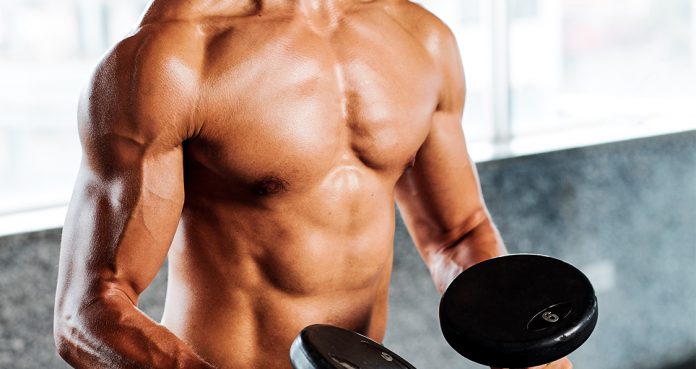
This is How You’re Stopping Yourself From Building Muscle
Avoid These Things to Build Muscle Mass
Going to the gym six days a week doesn’t guarantee you’ll build muscle mass. Without even knowing it, you might be doing a few things which could be acting as hurdles between you and your dream physique.
You build muscle when you do a series of right things. Going out of line in a single aspect can negatively affect your gains. In this article, we’ll be listing out five ways you could be stopping yourself from building muscle.
Lack of Recovery
Some people wear the “4-hour sleep a night” tag with pride. If your goal is to build muscle mass, you can’t afford to have anywhere less than seven hours of sleep every night. Your body recovers and puts on muscle size while you’re in deep sleep.
If you face sore muscles too often and can’t seem to recover from your workouts, you should consider using supplements to aid your recovery. Massages, stretching, Epsom salt baths are other effective recovery methods.
Generic Diet Plan
Following a custom diet plan is indispensable when it comes to building muscle mass. You can’t solely rely on making the right decisions when it comes to your daily meals. You should design a diet plan while keeping your daily calorie and macros goals in mind.
Getting professional help if you can’t build your diet plan can save you a lot of effort and time. For your diet plan to be sustainable, make sure it fits into your lifestyle so that you don’t have to make big sacrifices and adjustments to follow it.
Overtraining
When people don’t see results, they push harder, and it might do more harm than good. Overtraining can take a toll on your CNS (central nervous system) and can hamper your immune system.
If you take too long to recover from your workouts, chances are you might be in an overtrained state. Stopping training will be your best bet in situations like these until you get back on track.
Not Following A Customized Workout Plan
Most people take their workout programs too lightly and are happy following the free workout plans they can find online. You need to remember that no two people have the same genetics or muscle maturity.
Everyone has their strengths and weakness, and you need to device a workout program which works on building your weaker muscle group and polishes your strengths. Getting a customized diet plan will pay dividends in the long run.
Alcohol
If you’re on a timeline, drinking alcohol can act as a setback. As soon as you have a glass of your favorite poison, your body treats it just like that, a glass of poison. On alcohol consumption, your body slows down your metabolism and ramps up the fat storage in your body.
Alcohol is a source of empty calories and does nothing more than add layers of fat on your body. So, if you want to do a transformation, you might want to take your drinking down a notch or two.
Are you committing any of these sins? Let us know in the comments below. Also, be sure to follow Generation Iron on Facebook, Twitter, and Instagram.
Header image courtesy of Envato Elements
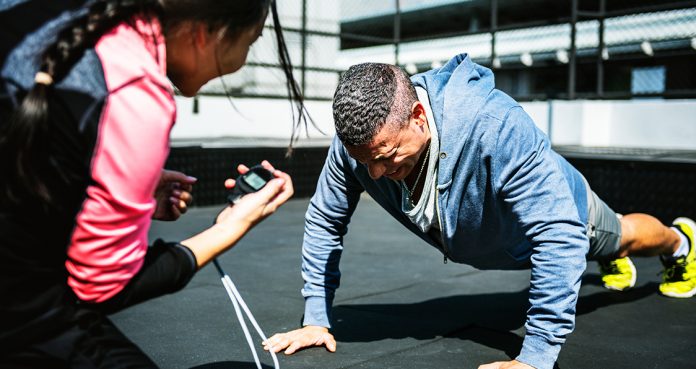
These Are The Guaranteed Ways of Overcoming Your Training Plateau
Ways of Breaking A Training Plateau
Hitting a training plateau can be one of the most frustrating things. You know you’ve hit an overhead ceiling when you can’t seem to make gains no matter what you do in the gym. Hitting a plateau is not something unusual and you might be suffering from it without knowing it.
There is nothing wrong with hitting a plateau but staying on it can be disastrous for your physical and mental health. There are a few things you can do to overcome the gain roadblocks when you hit them.
Change Your Training Program
Following the same training program for a long time can cause you to hit a plateau. You need to constantly add variations to your workouts to avoid hitting a muscle growth roadblock.
You should try changing or making adjustments to your workout program every 8-12 weeks. Starting a new program or following a new training philosophy can re-ignite your muscle growth.
Fix Your Diet
A nutrition deficient diet can be one of the leading causes for hitting a training plateau. Figure out your daily caloric requirement according to your training goals and design your diet keeping your macro and micronutrients in mind.
You could also use the help of supplements to fill the gaps in your nutrition. Make sure you don’t overly rely on supplements and keep real food as the main source of your nutrition. If you don’t know how to design your own diet, getting professional help can save you a lot of time and wasted effort in the gym.
Step Off The Gas
When people realize they have hit the gains roof, they train harder. Training harder than before can be a vicious cycle if you’re on a plateau. Maybe training too hard and a lack of recovery is what got you there in the first place.
Analyze your recovery plan and check if there are any loopholes. You should be getting anywhere between 6-8 hours of sleep every night to streamline the recovery from your workouts. Check if you’re sore for too long after your workouts. Being sore for a long time can be a sign of overtraining.
Shock Your Muscles in Every Workout
Your muscles are quick to adapt to your style of training and you need to constantly shock your muscles into growing. Do something new in every workout so your muscles have no idea what hit them.
Use an advanced training technique like supersets, drop sets, etc. or go crazy by doing 30-50 reps on your last set of every exercise. Using equipment like fat grips, arm blaster, new kinds of bars is also an incredibly effective way of adding variation to your training.
Stop Training Completely
If you can’t seem to make any progress after tweaking your training and diet, chances are you are overtraining. You should consider stopping working out and give your CNS (central nervous system) some time to recover.
Although stopping training can seem counter-intuitive but gaining muscle mass or losing weight will be easy once you come back from the break. Consider the break as a gym-detox for your body.
Have you ever hit a training plateau? Let us know in the comments below. Also, be sure to follow Generation Iron on Facebook, Twitter, and Instagram.
Header image courtesy of Envato Elements
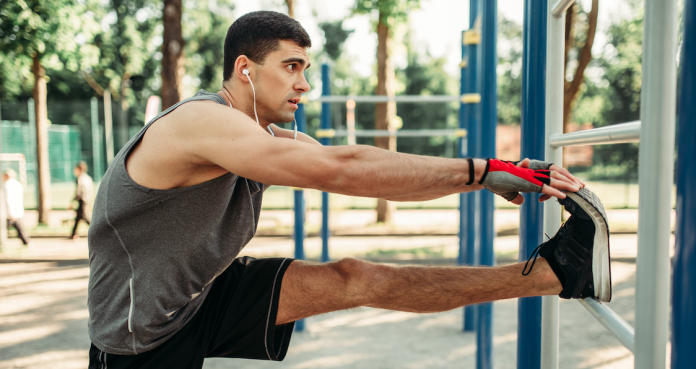
Are “Stretching Intervals” the Secret to Better Fitness?
What role does stretching play in your workout routine?
Most people in the health and fitness community will tell you that stretching is good for you, but the agreement ends there. In terms of anything more than that — how often should I stretch? What types of stretches should I be doing? Should I stretch before or after a workout, or both? — you will find thousands of camps, each with thousands of equally legitimate-sounding studies backing up whatever their personal belief is about the role of stretching in the workout.
We did a quick roundup online of what the research is really saying about stretching. Some experts even suggest that taking time to stretch during your workouts, rather than before or afterwards, is the most beneficial type of stretching you can be doing for your body.
Certified Pilates instructor Sarah James recently spoke with Well+Good to discuss her “stretch intervals” method, which consists of taking time to stretch in between reps during strength training: “It’s using time while you’re resting to get energy for your next exercise—you might as well be stretching, because you’re [using] every second of your time in a smart way.” Basically, since most of us just about collapse from exhaustion in between sets anyways, her view is that doing light stretching instead is a great way to maintain the body’s equilibrium.
The goal when working out is always to keep yourself as consistently active as possible for the duration of the workout. So, if you stretch between sets instead of lying on the floor like a beached whale, you’re doing a much better job of keeping your body fluid and in motion for as long as possible.
Another universal truth of stretching is that it increases flexibility. In the bodybuilding world, we tend to minimize flexibility as a way of thinking about the body in favor of traits we might prefer: strength, muscle mass, definition, etc. But here’s why it does matter to us: flexibility means durability.
Flexibility isn’t just useful in helping you touch your toes; flexibility helps your body heal faster, acclimates your muscles to change, and, most importantly, flexibility significantly reduces your chances of sustaining a serious injury in the gym. (At least, if you’re working out correctly, it does.) The range of motion you have in your joints shouldn’t be overlooked, whether your lifting weights or doing squats. Injuries like torn muscles, rotator cuff injuries, and even sprained ankles can keep people out of the gym for weeks or even months. So, flexibility is not only one of the core principles of fitness, it’s also an important preventive health measure.
Harvard Health gathered data from the American College of Sports Medicine on the perfect way to stretch. Their panel concluded that stretching is necessary at least two or three times a week, even for those who are not athletic, as a healthy part of body maintenance. So, for those of you who are working your bodies hard in the gym every day, stretching should be an every day thing as well, otherwise you’re not maximizing your workouts.
How do you stretch when you do your workouts? Let us know in the comments below!
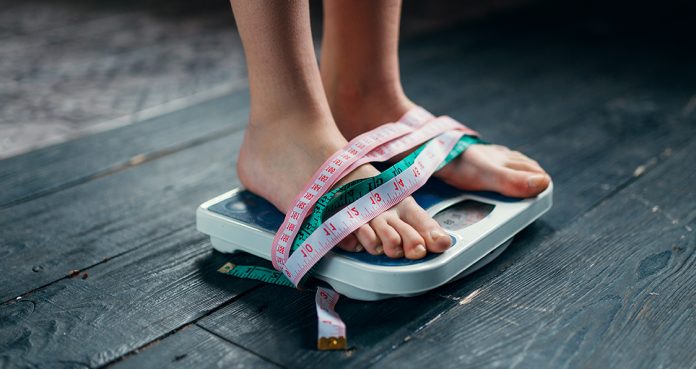
The Best Way To Lose Weight – Fast
The Guaranteed Way To Lose Body Fat
Many people get a gym membership to lose body fat but most of them quit after their high hopes die down. If losing fat was as easy as joining a gym, almost no one would have excess fat on their bodies.
A lot is said about weight loss, and most of what you hear from the bro-scientists is probably wrong. With this article, our goal is to break all the myths around fat loss so that you are empowered with the right knowledge.
Have A Goal
Most people make the mistake of not having a specific weight goal when they start on their weight loss journey. All they know is they want to lose fat. You need to have a specific goal if you’re serious about achieving your dream physique.
Without a specific goal, you can’t design a diet plan for yourself as you wouldn’t know how much weight you need to lose every week. Your daily caloric intake is dependent on your current and goal body weight.
With the amount of weight you want to lose, you should also set a time goal for yourself. Doing so will help fasten up the process, keep you on the timeline and will make you accountable.
Fix Your Calorie and Macro Goals
To be honest, weight loss isn’t as intimidating as many people make it. Your diet, training, and recovery are all you need to take care of. Setting a daily calorie goal is the first step towards cutting away your body fat.
Once you have your daily calorie goal, you can set your macronutrients goal as per your needs. If you don’t have the proper knowledge and skills to design your own diet, you should consult a professional to save yourself time and effort.
If you’re not losing the right amount of weight every week, you can make adjustments to your daily calorie and macronutrient intake goals. Hitting the right calorie goal for yourself can take some trial and error and you should be willing to experiment with different food.
A basic thing you should know is that you need to cut down 500 calories from your current daily calorie intake to lose 1lb of fat in a week. Make sure you don’t go crazy and keep the calorie deficit between 500-1000 calories a week.
Never Skip Cardio
We wish losing body fat was as easy as fixing what you ate. You can’t take cardio out of the equation when it comes to losing weight. If you want to lose weight fast, you should consider doing two cardio sessions in a day.
The first cardio session should be a 30-45 minute LISS (Low-Intensity Steady State training) session which you should ideally perform on an empty stomach. HIIT should be the second cardio session which should last anywhere between 10-20 minutes.
Avoid Starting A Fancy Diet
Many people make the mistake of starting a fancy diet when they want to lose weight. You should look to change your lifestyle so that the weight loss is sustainable and the weight doesn’t come back when you stop the specialized diet.
While IIFYM, Keto, IF, etc. might all sound like great ways to lose weight, you shouldn’t get too excited about trying them. Making adjustments to your lifestyle will pay better dividends in the long run as compared to experimenting with new diet plans.
Header image courtesy of Envato Elements
Which is your weakest muscle group? Let us know in the comments below. Also, be sure to follow Generation Iron on Facebook, Twitter, and Instagram.
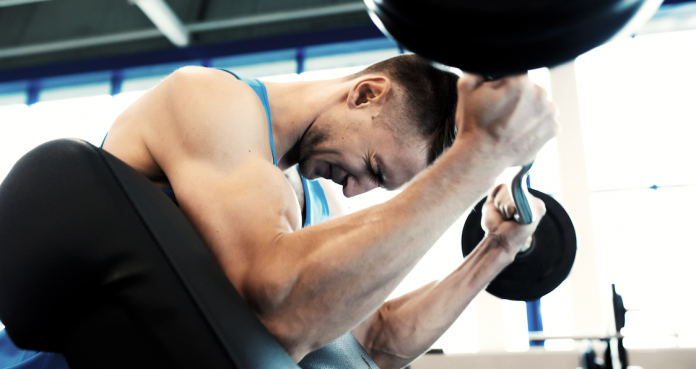
Top 5 Moves For Massive Arms
Arms are one of the cornerstones of any self-respecting bodybuilder’s workout routine.
When you picture someone working out at the gym, probably the first image that comes to mind is someone lifting weights. That’s because getting totally shredded, massive arms is basically the birthright of every bodybuilder. But are you sure that you’re getting the most gains for the energy you’re exerting? Here are the top 5 moves that are essential for making massive gains in your arms.
1. Bicep Curls
Bicep curls are probably the best exercise you can be doing to increase muscle mass in your arms. This is because they force you to keep your back completely straight as you lift, which focuses the muscular tension of your entire body down into your arms as you lift. It’s a simply exercise, but it’s a classic for a reason – it really works.
One tip for great, effective bicep curls is to increase the intensity of your workout by using a “thumb-less grip.” If you keep your thumb on the same side of the barbells as your fingers, you actually increase the workout you get all through the bicep muscle.
2. Dips
Another classic, dips are a great way to work out the arms while also feeling a nice burn in your core and upper back. It requires you to hold your spine in an upright position, so basically all of your body is getting a workout with this one, even if most of the strain is concentrated in your arms.
Dips are exhausting but, when done correctly, are one of the best arm exercises and one of the best full-body exercises overall. An important health and safety tip for dips is to make sure that your back is always straight and you are leaning a little bit forward over your hands to prevent injury.
3. Triceps Pull (Cable Machine)
The cable machine is extremely useful for arm workouts because it allows you to put your muscles to work without the extra wear-and-tear on the knees and shoulders that can come from more mechanical arm exercises. Adjust the cable machine to an amount of resistance that feels right, but still challenging, to you.
Then, do as many tricep pulls as you can – this exercise will focus right it on that area of the bicep and help to develop the musculature there. An important tip to remember for the triceps pull is that you should never lock your knees and always pull straight towards your sternum. Keeping a relaxed stance helps the tricep pull work only on your arms; anything else, and you end up getting more of a core or back workout, instead.
4. Chin-Ups
Another classic, chin-ups are a great way to maximize definition in your arms. Like some of the other exercises on this list, the key to chin-ups is to keep your back straight and really focus on using your arm muscles to lift up your torso, which should feel like a completely rigid object for the duration of the exercise.
Maintaining that control is what develops the arms so completely and fully from this exercise. A great tip for getting the most out of your chin-ups is to move at a slow, highly controlled pace. It’s easy to use your momentum coming down to swing yourself back up and over the bar, but that really doesn’t give you the best workout. Do it slowly for the ultimate burn!
5. Band Pushdowns
Pull down using a low-resistance band attached to something above you — a bar, a doorframe, etc. Just like using the cable machine to do a tricep pull, this exercise maximizes how much muscle mass you gain with minimal exertion in the joint department.
An important tip to remember when doing band pushdowns is to always scale the resistance of your band to your difficulty level. Remember, the goal isn’t to do what you’re comfortable with, but to push just beyond that. If you’re a veteran bodybuilder, you’re going to want a band with extra resistance, otherwise you simply won’t make huge gains.
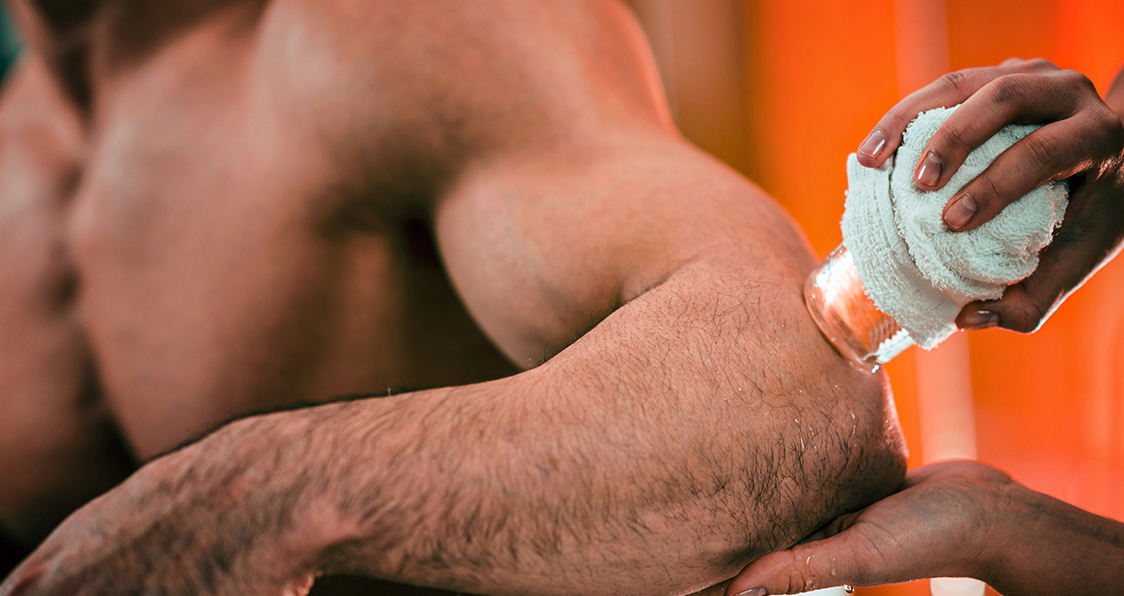
8 Muscle Recovery Tips For Killer Performance & Results
8 Muscle Recovery Tips For Killer Performance & Results
No matter how hard you train in the gym, you’re not going to see the desired results until your muscles are recovering optimally. You break muscle tissue when you lift weights. Your muscles only grow back bigger and stronger when you give them proper recovery conditions.
A poor recuperation plan will not only knock you off of your timeline but will also impair your performance in the gym. Improper recovery bleeds into your daily life as it keeps you feeling tired and lethargic.
We’re not going to give you some crazy muscle recovery tips like sleeping hanging upside down or running on the treadmill backward on alternate days. In this article, we’ll go over the most common recovery mistakes that people make, and how you can improve your recovery efficiency and time.
How To Recover Better After Workouts
Before we get to how to recover better, let’s talk about how long does it take for your muscles to recuperate completely after your workouts and what to do if your recovery program lacks substance.
Optimal Muscle Recovery Times
The muscle recovery times vary depending on your fitness levels and the difficulty of your workouts. The intensity, volume, duration, and frequency of your workouts combined will determine the toll they take on your body.
Your body might take up to 24 hours to recover from a relatively light workout. On the other hand, recovering from an intense workout with high volumes and low rest durations can take anywhere between 2-3 days.
It is imperative that you give your body enough time to recover between your workouts. You shouldn’t be training the same muscle group within 2-3 days after an intense workout or you’ll run the risk of overtraining.
Ever felt that burning sensation in your arms while performing the bicep curls? That’s lactic acid forming up in your muscles. Lactic acid is responsible for making your muscles feel tired and sore. If the lactic acid is not flushed out of your system during your rest periods, you’re at a higher risk of an injury.
Nutrition
Nutrition can be broken down into two main categories:
Food
You should be eating a balanced diet with the right amounts of macro and micronutrients. Your goal should be to consume 1 gram of protein per pound of body weight if your goal is to build and maintain muscle mass.
Fruits and vegetables should be a part of every meal and you should limit the consumption of ultra-processed food. You should focus on eating 6-8 small meals as compared to three big meals. Eating frequently will spike your metabolism rates and help you burn fat even while you’re sitting ideal.
If you’re a regular lifter, you should consume a good amount of protein in your pre and post-workout meals as protein are the building block of muscles. Carbs and fats should also be consumed for efficient recovery and to improve the overall functioning of the body.
Supplements
An article on muscle recovery tips can’t be complete without the mention of supplements. While supplements aren’t necessary for improving your recovery, they can surely help make things easier.
We recommend taking an intra-workout BCAA supplement as it can kick start your muscle recovery process while you’re actively breaking down muscle fibers in the gym. A fast-absorbing post-workout whey protein shake helps fill the muscle fiber cracks that are formed after an intense workout.
A creatine supplement can help improve your recovery times and replenish your ATP stores. Taking these three supplements will ensure your recovery times and soreness between workouts is reduced to the bare minimum.
Sleep
Have you ever wondered why babies sleep so much? Babies follow a strict cycle of sleeping, waking up, drinking milk, crapping, and then sleeping again. There is some crying in the middle of it too.
Deep sleep is where humans grow. Although you shouldn’t expect to grow taller, your muscles are in the most optimal recovery mode while you’re sleeping. You should target clocking 7-8 hours of sleep every night.
Stress
Your body produces a hormone called cortisol while you’re stressed. Cortisol hinders your body’s recovery mechanism as it puts your body in a fight or flight mode. Taking too much stress also reduces the production of testosterone in your body and raises your estrogen levels.
Even if you follow all the other muscle recovery tips mentioned in the article to the T but are constantly stressed throughout the day, you’re not going to see any progress in your physique.
Hydration
You should drink at least a gallon of water every day. Water along with blood carries nutrients and oxygen to different parts of your body. Dehydration can impair your muscles’ ability to repair themselves.
Workout Programs
Your training splits will also determine your recovery quality. If your muscles remain sore for more than two days a week, you should train two muscle groups every day and rest for two days a week. You need to find the sweet spot in designing your workout program where your workouts, recovery, and results complement each other.
Massage
Getting external help is one of the most overlooked aspects of recovery. There is a reason why most pro athletes go for massages and chiropractic sessions every week. Deep tissue bodywork can ease your muscles, fix muscular imbalances and improve blood flow throughout your body.
Clothing
Compression garments have taken over the scene over the past few decades. A study conducted in 2019 found that wearing compression clothing lowered the time for body muscle recovery in German handball players.
Compression clothing improves your blood flow and can also reduce the chances of an injury as it reduces the excess movement of muscles during intense activities. Compression wear is especially great for people who are already suffering from injuries.
A Small Note on Avoiding Injury While Improving Recovery
If you’re a beginner or an intermediate lifter, you should only increase the intensity, volumes, or frequency of your workouts incrementally. Taking larger leaps can increase your chances of an injury.
While training to failure in every workout might sound badass, you shouldn’t train until exhaustion every time. Pushing too hard in every session can take a toll on your CNS (central nervous system) and can put you out of action for weeks.
If an exercise feels physically uncomfortable, it would be advisable to avoid it especially as you get older. Repeated stress from exercises can cause small tears called micro-tears that can lead to muscles feeling sore and inflamed.
An accumulation of these tears puts you at risk of developing torn muscles, also called muscle strains or pulled muscles. Muscle strains can vary from mildly uncomfortable to complete ruptures that may require surgery for repair.
Takeaway
If you’re in the fit lifestyle for the long run, you should look at recovery with paramount importance. If your recovery is not up to the mark, you will notice a fall in your overall performance and results.
How long does it take for you to recover after an intense workout? Let us know in the comments below. Also, be sure to follow Generation Iron on Facebook and Twitter.
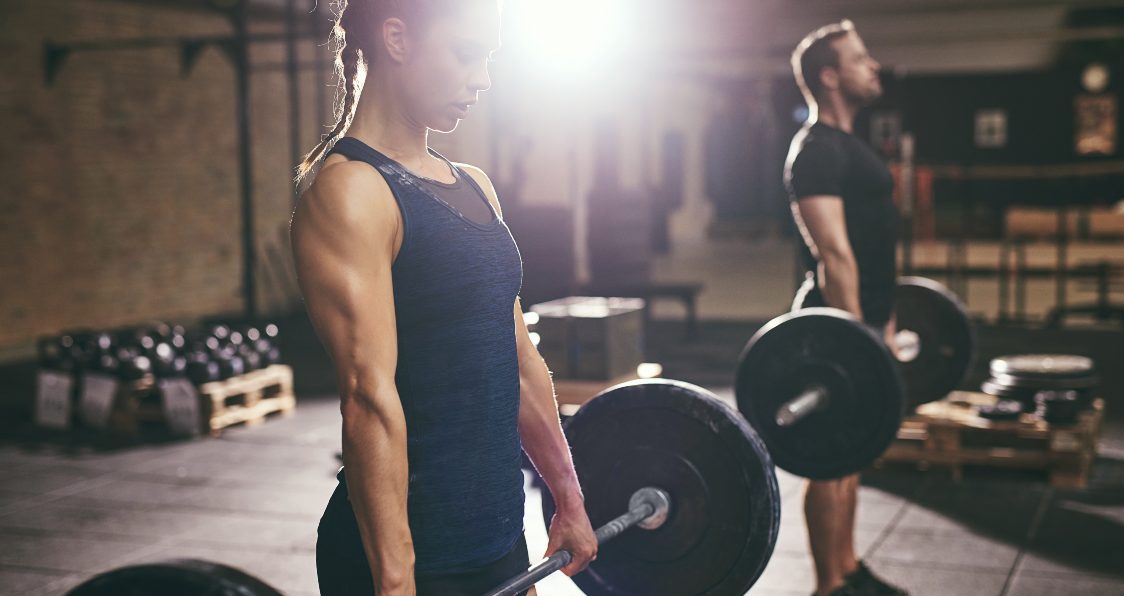
This Could Be The Best Method To Turn You Into A Deadlift God
Increase your deadlift with these great tips as you seek to lift that monster weight.
Bodybuilding is all about improving your physique and taking yourself to the next level. Once you start down the path of a bodybuilder, see the results and improvements, it’s unlikely that you’ll ever stop bodybuilding and that’s a fact. But while looking strong certainly has its benefits, being strong is the name of the game. There’s no point in being big without having some big strength to go along with it. If you’re a lifter looking to build your strength, then the deadlift is certainly an exercise worth investing in.
The squat is certainly the king of all lifting exercises, but there’s a reason why deadlifts aren’t performed on a weekly basis. So many lifters only do deadlifts a few times per month, particularly heavy deadlifts. But it’s all in how you train and the reality is that if you want to get really good at something then you’ll have to have some patience and take some time before seeing some legitimate growth. With an exercise like the deadlift that’s doubly true. Where so many people obsess over how much weight is on the bar, you should instead focus on building your technical ability. The more you understand how a lift works, the better the results will be once you decide to up the weight on the barbell.
Let’s take a look at the best ways to increase your deadlift so you start lifting some seriously heavy weight. With proper technique and a real focus on form, your gains will improve and you will be a monster for sure in the gym. The deadlift can be great when done right and it is important to take care of yourself so you can keep up with the gains and not find yourself in a world of pain and soreness.
Benefits Of The Deadlift
The deadlift is an exercise to work both upper body and lower body muscle groups and should not be overlooked. A great exercise for strength, balance, stability, and a test of sheer will, this lift is certainly one to put into your workouts.
Benefits include:
Increase strength and size: By working many muscle groups, you leave your body no choice but to grow. This can also aid in functional strength for those everyday activities and movements (1) so you see some real gains.
Enhance grip strength: With an emphasis on having a solid grip, it is important to focus on that grip to benefits strength in your fingers and forearms (2).
Balance and stability: This lift requires a high degree of core strength and will work to keep you as grounded so you can lift that massive weight. Stability will also improve with this lift as well.
Injury prevention: By working on strengthening your muscles, as well as your joints and tendons, this lift can provide great support to alleviate any potential injuries that may arise (3). With a focus on form, you won’t feel the need to overwork or use underdeveloped muscles for support.
Best Ways To Improve Your Deadlift
Now that you’re here, you are looking for the best ways to improve your deadlift. By focusing on certain points, you will surely start to see those gains you want most.
1. Work On Accessory Movements & Exercises
The deadlift works many muscles and it is important that they are all strong so you don’t use underdeveloped muscles for extra support. This can result in unwanted pain and injury. With accessory movements and assistance exercises, you start to focus on those weak areas to make sure you promote all around better strength.
2. Work On Grip
By working on grip, you take away the chance of injury in your forearms and fingers, vital points of attachment for the deadlift. Using something like weightlifting gloves or lifting straps can help reinforce better form and help you out when it comes to grip.
Check out our lists of the Best Weightlifting Gloves and Best Lifting Straps for some awesome products to help strengthen your grip!
3. Progressive Overload
This will help build strength and break through any plateau that may be causing your gains to slack. With progressive overload you can increase not only your one rep max but also how much you weight you lift in general and how much rest you have in between sets.
4. Hips Down & Open Chest
An open chest will eliminate curving of your spine and will also allow better movement from your lats, which are essential back muscles for the deadlift. With your hips down, you focus on better balance and stability to also improve form.
5. Look For Deadlift Variations
Focusing on variations will allow for a different perspective on the deadlift as opposed to just the traditional deadlift. Variations include farmer’s walks, the Sumo deadlift, Romanian deadlift, or the Deficit deadlift which is also a great way to boost progressive overload and really see some great gains.
Wrap Up
The deadlift is a great exercise to build strength and size while also aiding in everyday movements and those that are more sport specific. Looking for ways to better your deadlift can ensure a more solid form to keep you physically healthy as well as boosting strength so you can be a monster in the gym. Knowing the benefits and how to properly perform a deadlift are great for all your needs and can provide for a great workout to better yourself as an athlete and bodybuilder. Give the deadlift and its variations a try to really see those improvements you want most.
Let us know what you think in the comments below. Also, be sure to follow Generation Iron on Facebook, Twitter, and Instagram.
*Images courtesy of Envato
References
Wenning, Matthew R. (2014). “The Deadlift and Its Application to Overall Performance”. (source)
Lee, Julia-Ann; Sechachalam, Sreedharan (2016). “The Effect of Wrist Position on Grip Endurance and Grip Strength”. (source)
Berglund, Lars; Aasa, Bjorn; Hellqvist; Michaelson, Peter; Aasa, Ulrika (2015). “Which Patietns With Low Back Pain Benefit From Deadlift Training?”. (source)
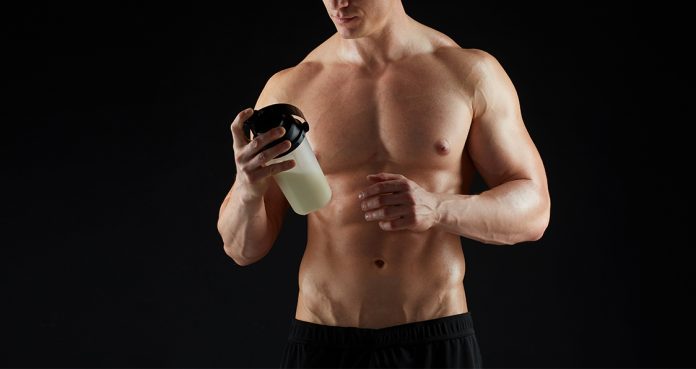
These Are the Right Times To Take Your Supplements
The Right Times To Take Your Supplements
Once you get all the supplements you need, the next question that arises is, what is the right time to take the supplements? Supplements have a tendency of getting better results when taken at specific times during the day.
Each supplement has a time window where your body absorbs and makes the most of it. Following a planned approach towards your supplementation, nutrition and training will get you the best results.
Whey Protein
Whey protein is arguably one of the most popular bodybuilding supplements. Protein is the building block of muscles and helps your muscles grow bigger and stronger. You can’t expect to build muscle mass while being on a protein deficient diet.
While you can take the whey protein supplement at any time throughout the day to meet your daily protein needs, whey protein (especially in its isolated form) is best absorbed by your muscles right after a workout.
Pre-Workout
Pre-workout supplements are self-explanatory. You need to take these supplements 30-45 minutes before your workouts. Some people make the mistake of taking them too close to their workouts and so the supplements end up being ineffective.
Pre-workout supplements these days have a lot of stimulants and ingredients in them. These stimulants can take up to 45 minutes to enter your bloodstream. You’ll only feel the kick of a pre-workout after the stimulants are carried all over your body through blood.
Glutamine
Many people don’t know the uses of glutamine and give up on it too soon. Glutamine is a building block of protein and forms a critical part of the immune system. Glutamine is an α-amino acid which is used in the biosynthesis of proteins.
Some people take glutamine as a pre, post or intra-workout supplement. Glutamine is a great supplement for recovery and is best taken before bed at night. Taking glutamine helps in improving the intestinal system, immune system, muscle mass gaining, and exercise performance.
BCAAs
BCAAs (or Branched Chain Amino Acids) are made up of three essential amino acids: leucine, isoleucine, and valine which are not produced by the body naturally. These amino acids need to be taken as supplements or through food to help in protein synthesis which results in muscle growth.
While you could sip on BCAAs throughout the day, the best time to take them is intra-workout. Taking BCAAs during your workouts will help delay fatigue, reduce muscle soreness, prevent muscle breakdown and eventually result in muscle growth.
Creatine
Creatine is one of the most controversial and researched supplements. Many people falsely believe creatine causes liver and other health-related problems. Creatine has been proven to help build muscle mass and strength without any side-effects.
There are two ways of taking creatine. You could do a loading and maintenance cycle in which you take 20 grams of creatine for 5-7 days and then lower down to a 2-10 gram maintenance dose. In the second method, you could take 5 grams of creatine pre-workout on a regular basis.
Header image courtesy of Envato Elements
Which supplements do you take? Let us know in the comments below. Also, be sure to follow Generation Iron on Facebook and Twitter.
